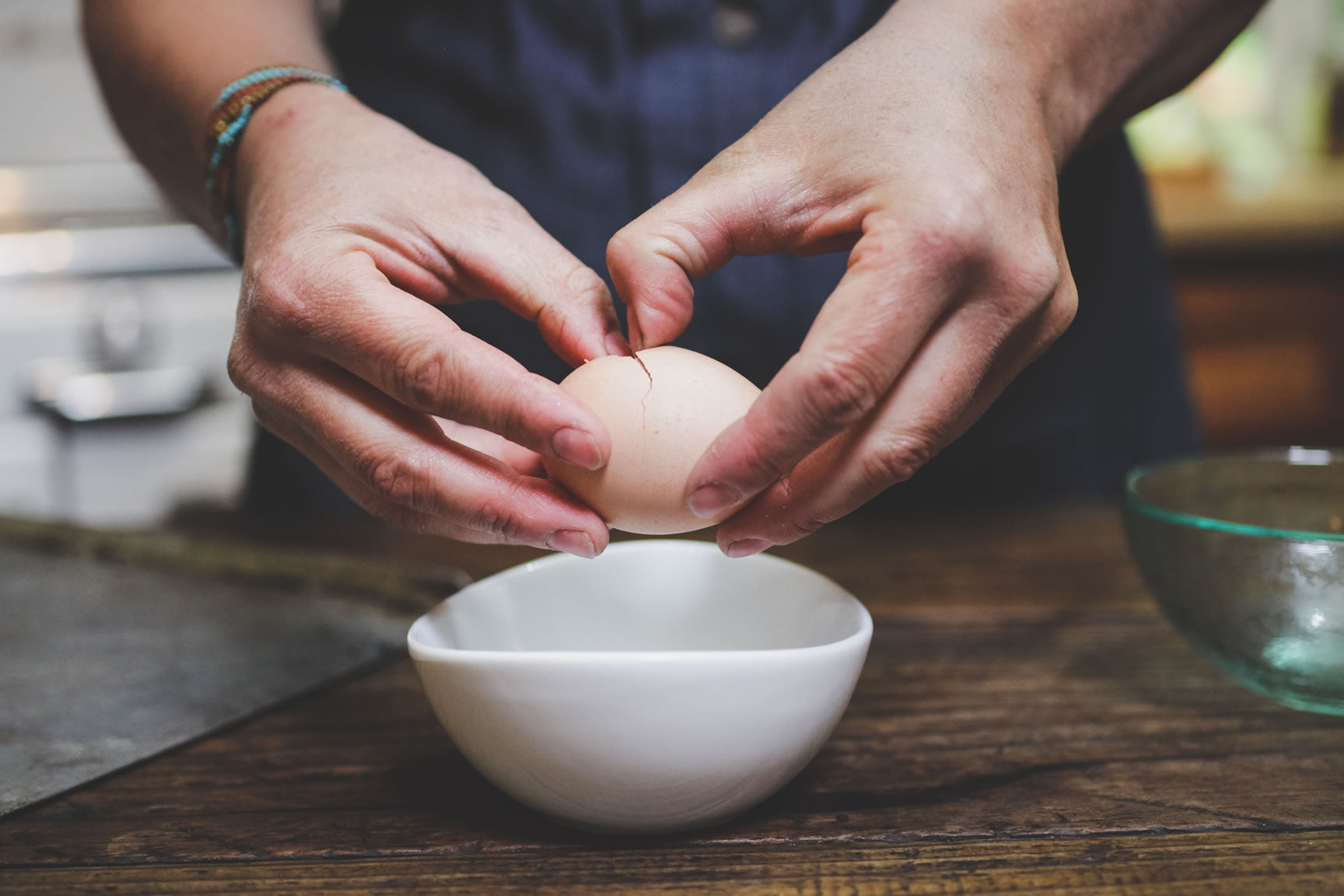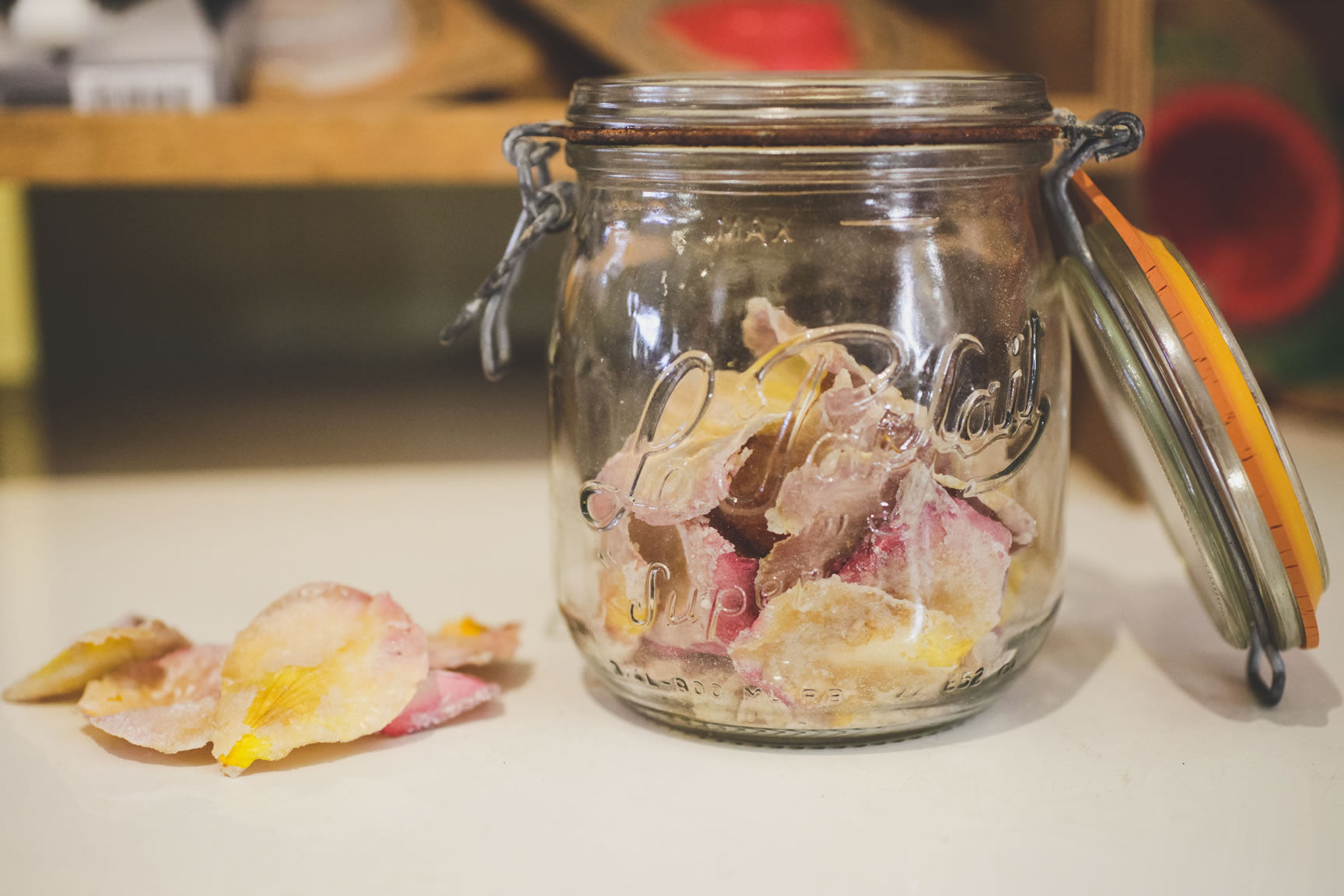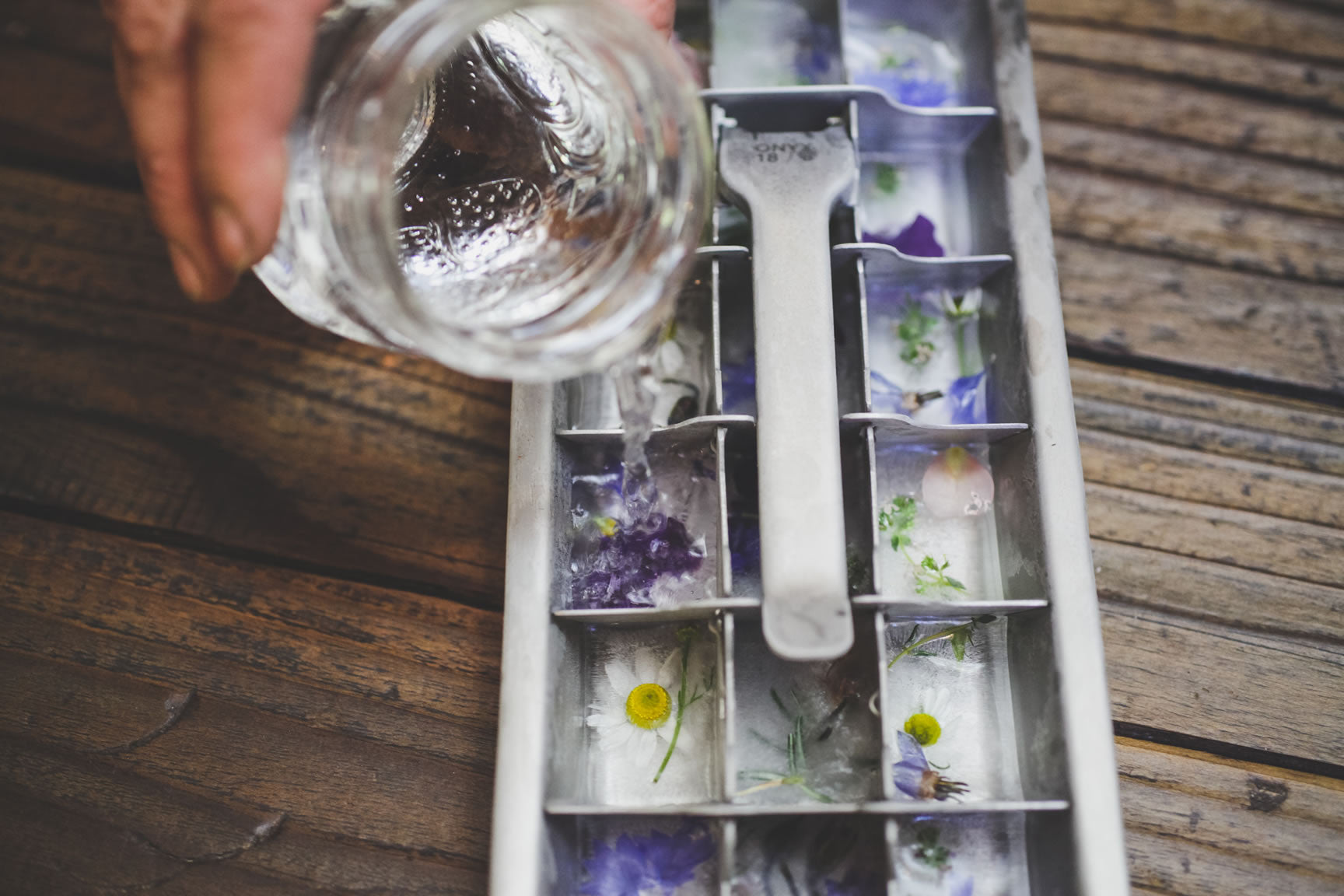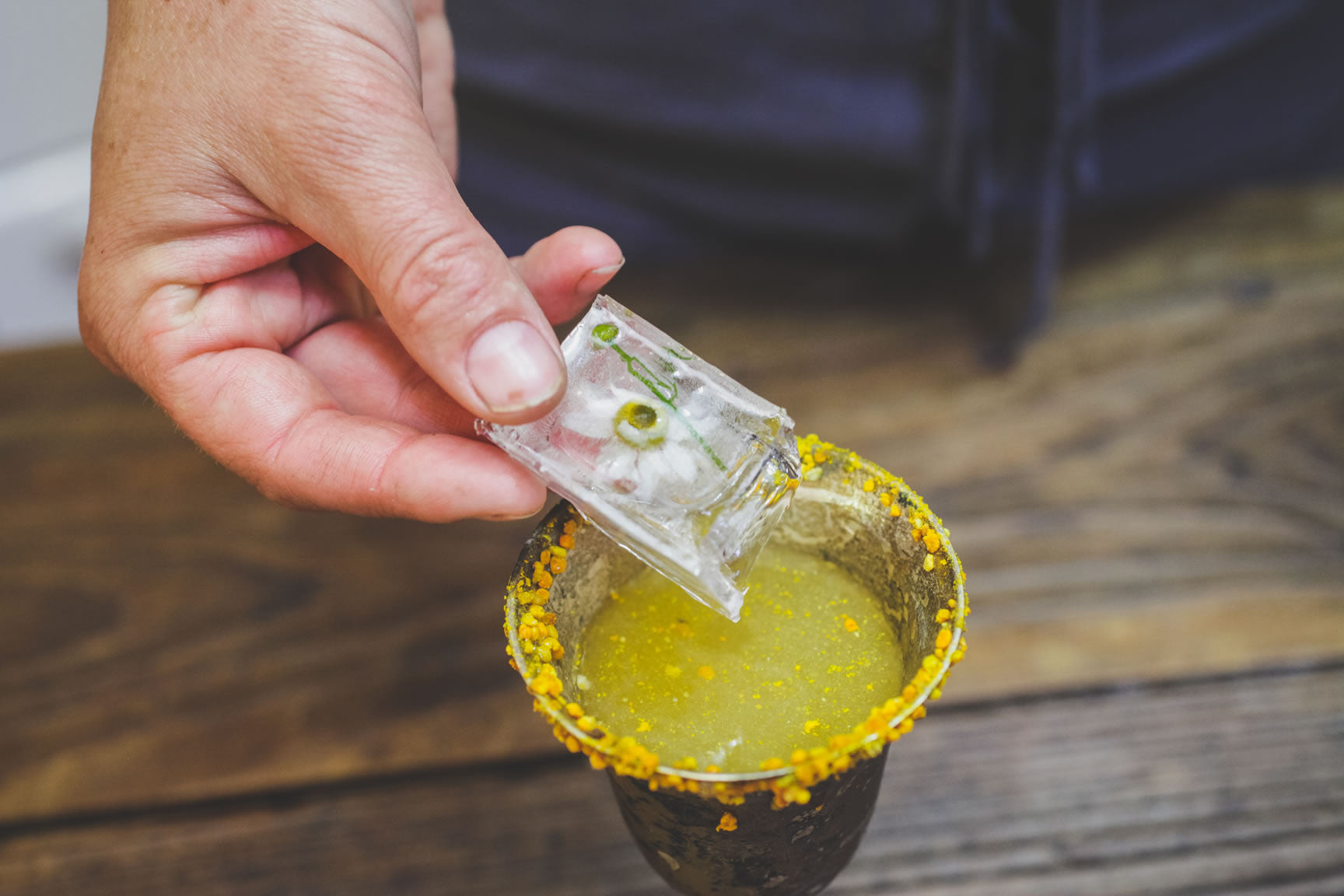- Continue Shopping
- Your Cart is Empty
The Edible Petal

What You'll Need
Equipment
For Ice Cubes
- Ice cube tray
For Candied Petals
- pastry brush
- small bowl
- baking sheet
For Flower Sugar
- jar for storage
Ingredients
For All
- edible flowers as described below both fresh and dried
For Candied Petals
- egg white
- caster sugar
For Flower Sugar
- granulated sugar
Candied Flower Petals
We used roses for this recipes, but violas or pansies would work as well. Other edible flowers, like nasturtiums, might be beautiful, but they are not as well suited for this recipe, due to their sharp, peppery flavor.
Choose fresh, organic petals from plants whose cultivation methods and history you are familiar with.
Using a paintbrush or pastry brush, paint (don’t dunk) each petal individually with egg white. If you are uncomfortable using egg whites, you may also use a simple syrup to coat the petals; however, the finished petals do not hold their shape as well as with the egg whites.
Dredge the egg-painted petals in superfine (caster) sugar, making sure to coat each side thoroughly.

Set the petals on a baking sheet to dry overnight.

If you do not plan on using the petals right away, store them in the freezer in an airtight container. Use them to decorate the tops of cakes or puddings, or to elevate the cheese board to a new level of fabulous.
Floral Ice Cubes
These are such a delight. They add a touch of whimsy and beauty to any cocktail or refreshing beverage, and a little bit of flavor, too. Mostly, however, they are a decoration, a celebration, a special touch that elevates the occasion of their use. It’s a party in a glass! Again, be sure to use flowers which are free of any contamination, be it aphids or insecticides. Sprigs of herbs, such as thyme, rosemary, or chamomile, can include both the flowering tops and the leaves for a more concentrated flavor. Pansies and violets have a sweet and perfumey flavor, and even tiny roses, such as the Lady Banks or Cecile Brunner, may be used if space allows. Consider using extra large or even spherical ice cube trays, if you want to get super fancy. Other lovely edible flowers, such as bachelor’s buttons, lavender, nasturtiums, and some salvias are also good choices.
There’s a trick to these babies. Flowers float on water. So the cubes must be assembled in stages to capture the flowers in the center of the cube.
Fill an ice cube tray 1/4 to 1/3 of the way with water. Using distilled water which has been boiled and then cooled will ensure the clearest cubes.

Place the clean flowers facing down in the water.
Freeze the cubes at this stage until they are solid, or nearly so with the flowers suspended in the top of the frozen half-filled cube. Add another layer of water to bring the level up to fill the remainder of the tray and cover the flowers, and freeze again.

Plunk into something delicious, and enjoy.
Flower Sugar
A flower sugar captures the floral, herbaceous elements of the petals in a matrix of sugar crystals. Now doesn’t that sound nice? Rose, violet, and lavender are all good choices for this process. Depending on the size of the flower, slightly different methods are used. While the method of making lavender sugar here can also be used with roses, we do not reccomend the reverse; lavender flowers are just too small to pick out of sugar individually.
To make lavender sugar, place 1 tablespoon dried culinary lavender flowers (lavendula angustifolia) in the blender and blend to a powder.
Add 1 cup granulated sugar to the lavender flowers, and blend until the sugar is superfine, almost powdered.

In a small bowl, combine the blended sugar with another cup of unblended sugar and mix thoroughly. The scent and flavor of lavender will suffuse the sugar, which is perfect for baking cookies, scones, and other sweet pastries.

To make rose sugar, fresh dry (but not dried) rose petals are layered with sugar in a jar.  Store the jar in a cool. dark place for several weeks, and then remove the rose petals. The sugar that is left behind will have the distinct flavor and smell of roses. Great for making rose-flavored kombucha, or sweet baked goods.
Store the jar in a cool. dark place for several weeks, and then remove the rose petals. The sugar that is left behind will have the distinct flavor and smell of roses. Great for making rose-flavored kombucha, or sweet baked goods.

Over to You
It’s part of our mission here at Mountain Feed to help you make delicious, sustainable, homemade food more often. Stop by and say hello on Facebook, Twitter, Instagram or Pinterest. Or, as always, you can do it the old fashioned way and come by the store to speak with one of our in-house experts.
